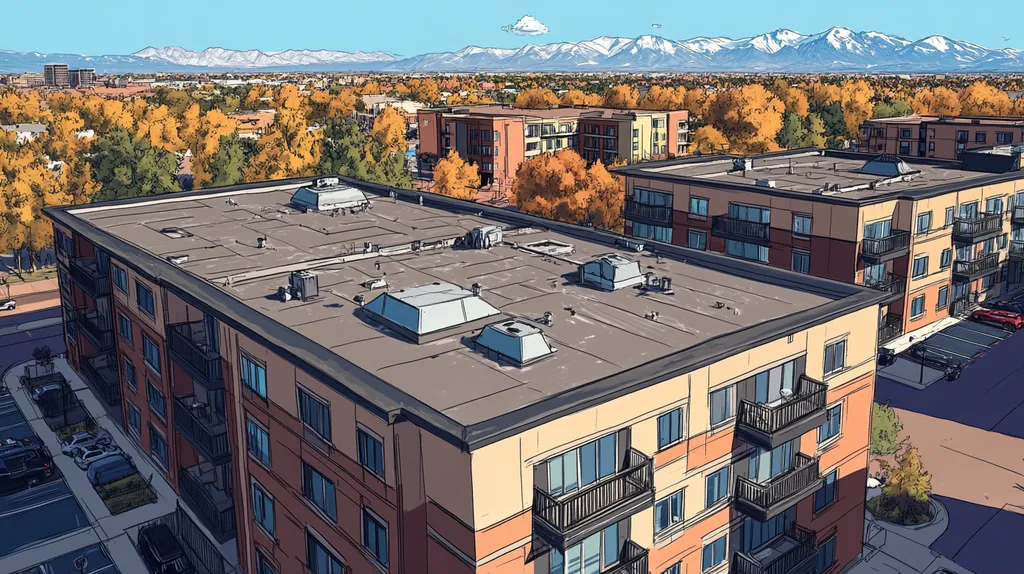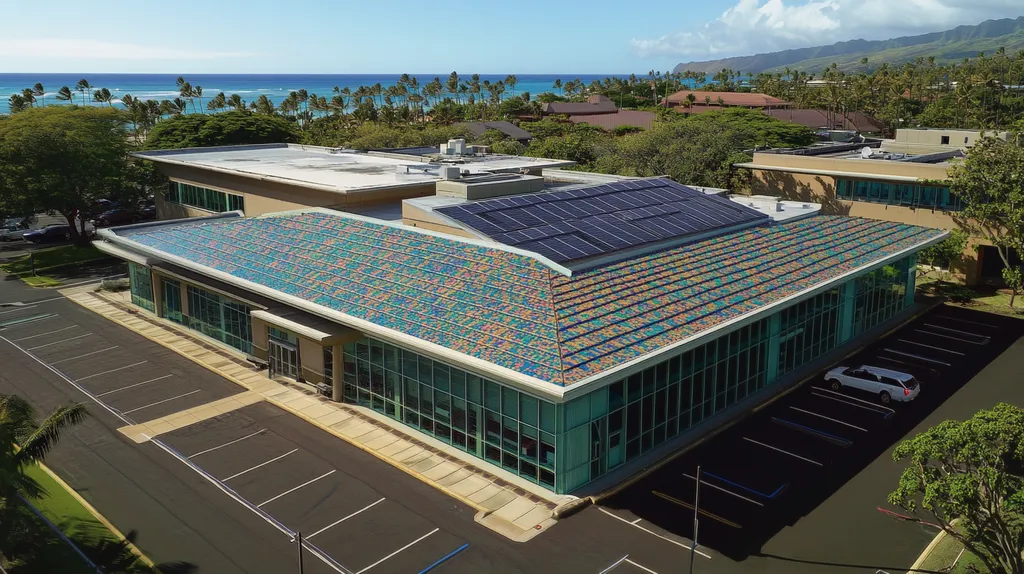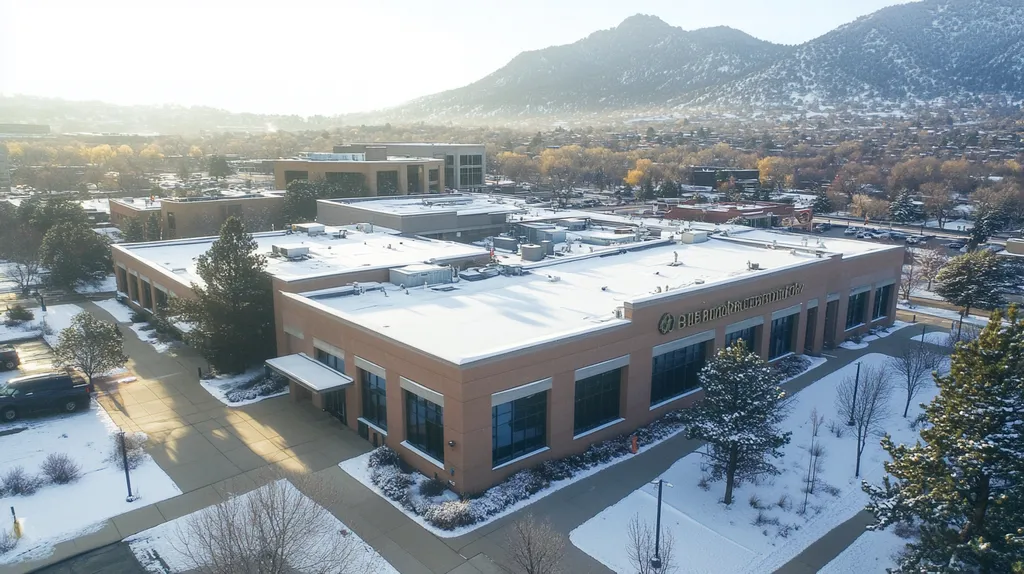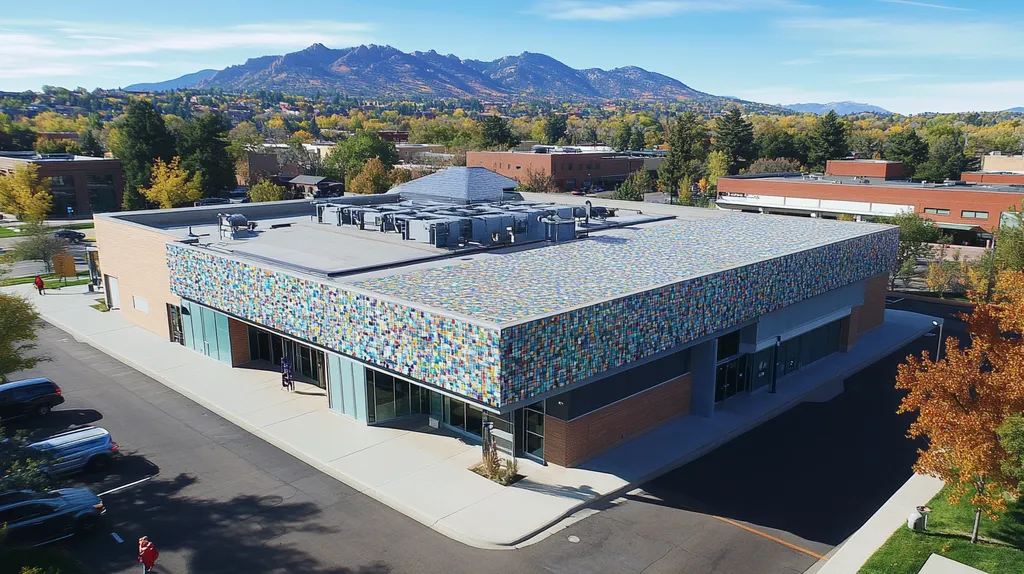Commercial roof maintenance costs can escalate by up to 30% when property owners overlook systematic upkeep, with emergency repairs averaging $20,000 per incident according to industry data.
For facility managers and property owners, understanding the factors driving long-term roofing expenses is crucial for protecting their investment and avoiding unexpected budget impacts.
This comprehensive guide examines critical areas including performance tracking, financial planning, compliance requirements, and risk management strategies that directly influence maintenance costs over a roof’s lifecycle.
SECTION 1: PERFORMANCE FACTORS
Identifying performance factors is vital for controlling the long-term maintenance costs associated with commercial roofs. Poor management of these factors can lead to early material failures, resulting in potentially costly repairs. Research indicates that inadequately maintained roofs generally require replacement every 10 to 20 years, which can significantly elevate expenses. This section will cover the durability and lifespan of roofing materials, the impact of water ponding, and the critical nature of structural integrity.
Assessing Roof Material Durability and Lifespan
The selection of roofing materials has a direct impact on long-term maintenance costs. High-quality options, such as thermoplastic polyolefin (TPO) and metal, tend to offer longer lifespans than more fragile choices like standard asphalt. For example, TPO can last up to 30 years when installed correctly, while lower-grade asphalt may only last around 15 years.
Moreover, weather resistance is essential to consider. Roofs located in regions with extreme weather conditions benefit from durable materials designed to withstand harsh elements, thereby minimizing the need for frequent and expensive repairs.
Regular evaluations of roofing materials are crucial. Conducting an annual inspection helps detect wear and tear early, allowing for timely interventions that prolong the roof’s life. Neglecting maintenance can lead to severe damages, substantially increasing long-term costs.
Key Action Items
Identifying and Managing Water Ponding and Drainage Issues
Water ponding is a prevalent issue that drastically reduces a roof’s lifespan, resulting in leaks, mold, and structural damage over time. Proper drainage design is crucial to prevent water accumulation, making it a key responsibility for property managers.
Regular inspections and cleaning of drainage systems, such as gutters and downspouts, are vital. Blockages can obstruct proper water flow, leading to pooling on the roof. Establishing a straightforward maintenance routine can significantly reduce the risk of costly emergency repairs.
Additionally, hiring a qualified roofing contractor to assess drainage and ponding issues can offer valuable insights into necessary improvements. This proactive step can extend the roofing system’s life and save on future costs.
Key Action Items
Evaluating Structural Integrity and Roofing System Components
The structural integrity of a roofing system is fundamental to its long-term performance. Weak or compromised structures can lead to severe and costly failures. Therefore, regular evaluations of load-bearing elements and supports are essential for maintaining safety and longevity.
Elements such as insulation, membranes, and flashing should be examined thoroughly. Issues within these components can quickly escalate, resulting in larger repair costs. Conducting regular maintenance checks helps identify minor issues before they become major problems.
Moreover, ensuring that all roofing components function together seamlessly enhances overall efficiency. A single faulty component can create vulnerabilities, resulting in leak points and extensive damage.
Key Action Items
SECTION 2: FINANCIAL CONSIDERATIONS
Understanding the financial implications of roof maintenance is critical for property owners. With average roofing repairs costing between $1,000 and $3,000, even minor issues can escalate quickly into major expenses. Neglecting these costs can lead to significant financial burdens later on, including potential roof replacements that average between $12,000 and $20,000. This section explores three key areas: distinguishing between repair and replacement costs, planning budgets for inspections and maintenance, and anticipating the financial impacts of roof deterioration and emergencies.
Calculating Repair Versus Replacement Costs Over Time
Choosing between repairing or replacing a commercial roof often involves complex calculations. Property owners must weigh not only the immediate costs but also long-term impacts. For instance, while a minor leak repair may cost around $1,500, it could lead to extensive water damage, potentially spiking replacement costs significantly. Grasping the total cost of ownership can highlight the advantages of addressing issues promptly.
It’s important to recognize that roofs typically have a lifespan of 15-30 years. As property managers consider the cumulative costs of ongoing repairs, they might find these expenses can surpass those of a full replacement. For example, if annual maintenance extends a roof’s life by just five additional years, the repair expenses may still be lower than the cost of an untimely replacement.
Evaluating warranties is also essential. A new roof usually comes with a warranty covering repairs for a designated period, potentially saving property owners future expenses. However, frequent repairs can void these warranties, resulting in unexpected costs.
Key Action Items
Budgeting for Scheduled Inspections and Preventive Maintenance
Budgeting for routine inspections and preventive maintenance is a sound strategy for minimizing long-term expenses. Skipping regular maintenance can lead to frequent, costly repairs, making it essential to have a maintenance schedule in place to identify problems early.
The average cost of a semi-annual inspection ranges from $200 to $500—insignificant compared to the potential $10,000 that emergency repairs for undetected issues might cost. Timely inspections enable early detection, allowing for intervention that saves money.
Property owners should also integrate a preventive maintenance plan into their budgets. This proactive approach ensures resources are allocated for tasks like cleaning debris and inspecting seals. Proper maintenance can significantly prolong the life of the roof and improve its performance.
Allocating 1-3% of the roof’s total value annually for maintenance can accumulate substantial savings over time. This forward-thinking financial strategy helps property owners maximize their operational budgets and protect their investments.
Key Action Items
Forecasting Cost Impacts of Roof Deterioration and Emergencies
Anticipating the financial consequences of roof deterioration is essential for effective planning. As roofs age, they become more prone to structural issues and failures, thus understanding long-term cost implications is vital to making informed choices.
For example, a roof showing signs of wear can lead to increased energy costs from inadequate insulation, further inflating operational expenses. Additionally, property owners might face rising insurance premiums if their roofs remain in disrepair, representing another financial burden.
Unexpected emergencies can occur at any time. The average cost for addressing an emergency leak repair often exceeds $5,000, underscoring the need for regular check-ups and timely responses to reported issues. Financial forecasting should include ongoing evaluations of the roof’s condition and potential deterioration timelines.
By anticipating problems and budgeting for them, property owners and facility managers can sidestep significant unplanned expenses, ensuring their roofs remain a valuable investment.
Key Action Items
SECTION 3: COMPLIANCE REQUIREMENTS
Ignoring compliance with building codes and roofing standards can result in severe penalties and unexpected repairs. Non-compliance has been shown to raise maintenance costs by up to 30%. Property owners and facility managers must prioritize understanding these compliance issues to protect their investments and ensure the safety of their properties. This section delves into essential compliance topics, including building codes, the importance of documentation for inspections, and how to meet safety and environmental regulations.
Understanding Building Codes and Roofing Standards
Building codes establish important safety and performance benchmarks for commercial roofs, and they differ from one location to another. It’s crucial to research local regulations, as some areas have specific requirements for insulation levels aimed at improving energy efficiency.
Adhering to these codes is critical; failing to do so can lead to unwanted fines or renovations that strain budgets. Compliance with roofing standards should be a primary concern for property managers.
Staying informed about any updates to building codes is essential for identifying upgrades that can provide long-term savings and optimize building performance. Engaging licensed contractors familiar with local regulations further ensures that roofing projects meet current standards, reducing the risk of legal complications.
Key Action Items
Maintaining Documentation for Regulatory Inspections
Good documentation practices are essential for demonstrating compliance during regulatory inspections. This includes maintaining logs of maintenance activities, installation records, and service agreements. Well-organized records provide evidence that the roofing system has been maintained according to regulations.
Inadequate documentation can attract scrutiny and potential fines during inspections. Property managers might struggle to justify compliance if their records are incomplete or disorganized.
Implementing a centralized filing system for roofing documents aids in promptly accessing necessary information during inspections, reducing delays and potential penalties. Regular audits of documentation practices help identify and fill any gaps, ensuring a smoother inspection process.
Key Action Items
Ensuring Safety and Environmental Compliance in Roofing Work
Safety and environmental regulations are critical considerations for roofing projects. Adhering to Occupational Safety and Health Administration (OSHA) guidelines not only protects workers but also limits liability for property owners. Implementing proper safety protocols during roofing work can significantly reduce accident risks.
Environmental compliance is also necessary, including the responsible disposal of roofing materials and ensuring new roofing systems meet local environmental regulations. Non-compliance can lead to substantial financial penalties and harm a company’s reputation.
Property owners should prioritize hiring contractors who emphasize safety and environmental considerations. Establishing safety training for all team members can foster a culture of compliance and accountability in roofing work.
Key Action Items
SECTION 4: RISK MANAGEMENT
Overlooking vulnerabilities in roofing systems can lead to disastrous consequences, resulting in hefty repair bills and unexpected business disruptions. The Centers for Disease Control and Prevention indicates that severe roof leaks can halt operations, with losses soaring above $20,000 per day. For property managers, recognizing and addressing these vulnerabilities is essential to safeguard their investments and maintain seamless operations.
Detecting and Prioritizing Roofing Vulnerabilities
Regular inspections play a crucial role in identifying potential weaknesses in roofing systems. Property managers should arrange inspections at least bi-annually or following extreme weather events. During these assessments, attention should be given to issues like cracked flashing, ponding water, and damaged membranes to prioritize necessary repairs.
Leveraging technology can enhance detection capabilities. For example, infrared thermography effectively detects moisture trapped beneath roof surfaces. Early identification of vulnerabilities allows property managers to prioritize repairs based on urgency and budget considerations.
Neglecting these vulnerabilities can exacerbate issues over time, escalating maintenance costs. Creating a detailed vulnerability map helps track and prioritize repairs proactively, minimizing future expenses and enhancing the roof’s lifespan.
Hiring a professional roofing contractor for inspections ensures an unbiased evaluation. Their expertise helps property managers identify critical issues that could lead to expensive repairs down the line.
Key Action Items
Implementing Hazard Controls to Prevent Roof Failures
Establishing effective hazard controls is vital for reducing the risks linked to roof failures. This includes ensuring drainage systems are clear to prevent water pooling, which can compromise structural integrity. Regularly cleaning gutters and downspouts significantly cuts the risk of leaks and other water-related issues.
Investing in high-quality roofing materials bolsters resistance against environmental threats. For instance, selecting roofs with enhanced wind resistance can protect against storm damage. Training staff on safe roof access and maintenance reduces overall hazards.
Creating a detailed safety plan for roof access guarantees that maintenance workers understand the inherent risks. Scheduling maintenance work during off-peak hours can minimize operational disruptions.
By proactively managing potential hazards, property managers can considerably lower long-term maintenance costs. An effective hazard control plan safeguards not only the roof but also the overall integrity of the building.
Key Action Items
Planning for Emergency Response and Roof Damage Mitigation
No roofing system is entirely immune to damage, making emergency preparedness a key component of risk management. Property managers should develop a contingency plan detailing responses for various roof damage situations, such as leaks or severe weather events.
This plan must outline who is responsible for implementing emergency measures and maintain a list of reliable contractors for quick repairs. Having these resources readily accessible ensures a faster response, minimizing damage and related costs.
Regularly reviewing and practicing the emergency response plan is essential. Property managers should conduct annual drills to ensure all team members are familiar with their roles, thereby decreasing response times during real emergencies.
Implementing tools like roof drain alarms can provide early notifications of potential issues. These early alerts are crucial in preventing more extensive and costly repairs, ultimately saving time and resources.
Key Action Items
SECTION 5: OPERATIONAL PROCEDURES
Implementing effective operational procedures for roof maintenance is not just a best practice; it is critical to safeguarding financial investments and ensuring building integrity. Inadequate management can lead to significant cost increases—up to 30% in long-term expenses. Establishing comprehensive protocols for inspections, professional repairs, and thorough documentation is essential for property owners and facility managers committed to maintaining the performance and longevity of their roofs.
Establishing Routine Roof Inspection and Maintenance Protocols
Regular inspections of commercial roofs are vital in extending their lifespan and ensuring optimal performance. Property managers should develop a thorough inspection schedule, ideally every six months and following any significant weather events. This proactive approach allows early detection of issues, preventing them from escalating into expensive repairs.
During inspections, qualified personnel should focus on critical elements such as membranes, flashing, and drainage systems. Documenting the findings provides a roadmap for future maintenance actions and enhances long-term planning. Consistent checks also help minimize liabilities associated with roofing failures.
Utilizing advanced techniques, such as thermal imaging, enables early identification of concealed issues. Employing technology during inspections aids in making data-driven maintenance decisions, optimizing strategies to lower costs. Proper staff training or hiring qualified professionals ensures that inspections align with industry best practices.
Key Action Items
Coordinating Professional Roof Repair and Contractor Oversight
When repairs are indicated, effective coordination with skilled contractors can significantly impact the health and longevity of the roof. Thoroughly vetting potential contractors is essential to ensure they possess the appropriate certifications and relevant experience. Establishing clear communication protocols enhances transparency and enables effective tracking of progress during repair projects.
Regularly reviewing contractor performance is crucial for quality assurance. Continuous oversight allows for quick responses to issues, minimizing delays that could result in further damage. Formalizing agreements that stipulate performance expectations fosters accountability.
Engaging professionals for both major repairs and routine maintenance reduces the risk of technical errors. Their expertise ensures the use of high-quality materials and best practices, directly correlating with lower long-term maintenance costs.
Key Action Items
Documenting Maintenance Activities and Condition Tracking
Thorough documentation of all maintenance activities is a cornerstone of effective roof management. Maintaining a comprehensive log that details inspections, repairs, and materials used allows property managers to monitor the roof’s condition over time. This data is invaluable for budgeting and planning future maintenance activities.
Utilizing digital documentation tools can streamline record-keeping and improve access to critical information. Cloud-based systems allow multiple team members to access updates in real-time, enhancing communication and collaboration. Frequent updates to documentation also help build trust among property managers and contractors.
Implementing condition tracking mechanisms can reveal patterns of recurring issues within the roofing system. Over time, this information can guide strategic decisions regarding replacement or extensive repairs. By consistently maintaining organized records, property professionals enhance their ability to make informed and financially sound maintenance choices.
Key Action Items
SECTION 5: OPERATIONAL PROCEDURES
Implementing effective operational procedures for roof maintenance is essential to preventing costly damage and ensuring the structural integrity of your building. Failure to manage roofing systems properly can result in long-term expenses rising by as much as 30%. Establishing clear protocols for inspections, repairs, and detailed documentation is critical for property owners and facility managers dedicated to maintaining their roofs effectively.
Establishing Routine Roof Inspection and Maintenance Protocols
Regular inspections are crucial for prolonging the lifespan of commercial roofs and ensuring their efficient operation. Property managers should create a detailed schedule for inspections, ideally every six months plus after severe weather. This forward-thinking approach allows for the quick identification of potential issues before they turn into costly repairs.
Inspections should focus on critical components like membranes, flashing, and drainage systems. Documenting findings not only guides future maintenance but also enhances long-term planning. Regular checks help reduce liabilities associated with roofing failures, thereby improving overall safety.
Utilizing advanced tools—like thermal imaging—can uncover concealed problems early. Employing technology during inspections helps make informed, data-driven maintenance decisions, ultimately optimizing strategies for cost savings. Proper training or hiring experienced professionals is essential for aligning inspections with industry best practices.
Key Action Items
Coordinating Professional Roof Repair and Contractor Oversight
When repairs are needed, coordinating with skilled contractors is essential for enhancing the roof’s longevity and performance. It’s critical to thoroughly vet potential contractors to ensure they have the necessary certifications and relevant experience. Clear communication channels facilitate transparency and enable effective progress tracking throughout repair projects.
Regularly reviewing contractor performance is vital for maintaining quality control. Consistent oversight allows for quick responses to issues, minimizing delays that could cause further complications. Written agreements that specify performance expectations help foster accountability.
Utilizing professionals for both significant repairs and routine upkeep reduces the likelihood of technical errors. Their expertise ensures using high-quality materials and techniques, which directly relates to lower long-term maintenance costs.
Key Action Items
Documenting Maintenance Activities and Condition Tracking
Thorough documentation of maintenance activities is a key pillar of effective roof management. Keeping a comprehensive log of inspections, repairs, and materials used allows property managers to monitor the roof’s condition over time. This valuable data aids in budgeting and planning for future maintenance needs.
Using digital tools for documentation can streamline record-keeping and facilitate easy access to critical information. Cloud-based systems can enable multiple team members to access updates in real time, improving collaboration and communication across the board. Regularly updating documentation helps build trust between property managers and contractors.
Condition tracking mechanisms can reveal patterns of recurring issues, providing insights that inform decisions about major repairs or complete replacements. Maintaining organized records empowers property professionals to make informed and financially sound choices regarding the roof’s long-term upkeep.
Key Action Items
The Bottom Line
With commercial roof maintenance costs rising 30% annually for poorly maintained systems, property owners cannot afford to overlook systematic upkeep and planning.
Emergency repairs averaging $20,000 per incident underscore the critical importance of implementing proactive maintenance strategies.
Successfully managing long-term roofing costs requires an integrated approach spanning regular inspections, documented maintenance procedures, code compliance, and risk mitigation protocols.
Property professionals who leverage technology, maintain detailed records, and partner with qualified contractors position themselves to maximize their roofing investment while minimizing unexpected expenses.
By following the guidance outlined in this comprehensive review, facility managers can develop cost-effective maintenance programs that protect both their buildings and their bottom line.
FREQUENTLY ASKED QUESTIONS
Q. What factors affect the lifespan of a commercial roof?
A. The lifespan of a commercial roof is influenced by material quality, weather exposure, and maintenance. High-quality materials like TPO can last longer than cheaper options. Regular inspections and addressing minor issues promptly also help prolong the roof’s life.
Q. How should I budget for long-term industrial roof maintenance?
A. Allocate 1-3% of your roof’s total value annually for maintenance. This helps mitigate unexpected repair costs. Setting aside funds for routine inspections can prevent larger expenses by addressing issues early.
Q. Why is compliance important for commercial roofs?
A. Compliance ensures your roofing meets safety and performance benchmarks. Non-compliance can lead to penalties and increased maintenance costs. Understanding local building codes protects investments and maintains safety standards.
Q. How can I identify vulnerabilities in my industrial roof?
A. Regular inspections are critical for spotting vulnerabilities. Look for issues like cracked flashing or ponding water. Utilizing technology like infrared thermography can also help detect moisture under the roof’s surface.
Q. How do I select a qualified contractor for roof repairs?
A. Vet contractors by checking certifications and experience. Clear communication is essential for progress tracking. Reviewing past work and ensuring they use high-quality materials will also contribute to a successful repair process.
Q. Why is documentation important for roof maintenance?
A. Proper documentation tracks maintenance, repairs, and materials used, which helps assess the roof’s condition over time. It provides valuable data for budgeting and can assist in identifying recurring issues for effective long-term planning.
Q. What emergency plans should I have for roof damage?
A. Develop a contingency plan outlining responses to various roof damages. Identify responsible personnel and have a list of trusted contractors ready for quick repairs, minimizing damage and related expenses during emergencies.










